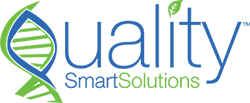Unlock Food Regulations for Food Sales Health Canada & FDA

Save time & money by learning food regulations for food sales in North America including food facility registration, TMAL, FSVP, and more.
... Read moreForeign Site Reference Number | FSRN Fruitful Interim Measures

Who needs a Foreign Site Reference Number (FSRN)? For Natural Health Products (NHPs) manufactured, packaged, and/or labeled by sites located outside of Canada, Canadian importers are required to provide evidence that these sites will be at par with Canadian Good Manufacturing Practices (GMP) under Part 3 of the Natural Health Products Regulations (NHPR). This can
... Read more5 Common Pitfalls When Importing Natural Health Products

As a license holder for Natural Health Products (NHPs), it is your responsibility to be aware of and educated on all requirements for Canada. This blog will aim to highlight and summarize the common pitfalls of a company that manufactures NHPs outside of and imports them into Canada. Working with an importer such as Quality
... Read moreClassifying Your Product: Drug, NHP, or Cosmetic?

Learn how to classify your product as a drug, NHP, or cosmetic in Canada. Understand key decision-making criteria, borderline examples, and what regulatory path you need to follow to stay compliant with Health Canada.
... Read morePrescription Drugs: Interim Implementation of Electronic Labelling

Background On April 22, 2022, Health Canada issued a notice to the industry on the interim implementation of electronic labelling for human prescription drugs. Consultation on the draft guidance “Electronic media in prescription drug labelling” was open between March 12, 2021, and May 7, 2021. The guidance document released by Health Canada outlines the
... Read more5 Reasons Why Food Labelling Is Important for Your Business

Have you ever looked at a food label and wondered why all that information is there? Labels do more than just list ingredients. They play a critical role in ensuring compliance with Health Canada and FDA regulations, preventing legal issues, and keeping products on the market. They also help identify allergens, verify nutrition claims, and
... Read more